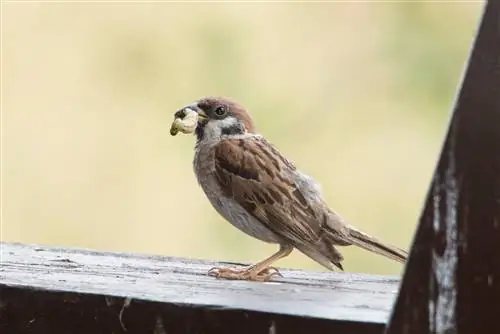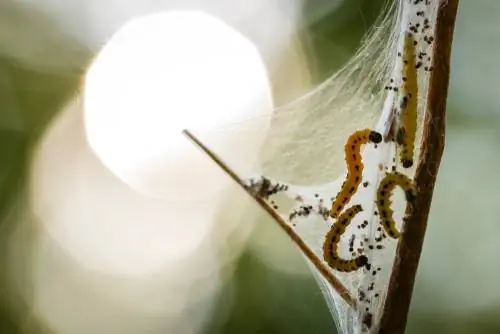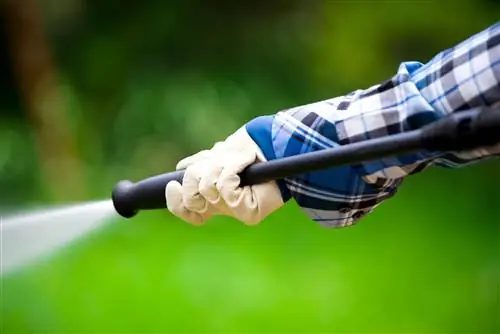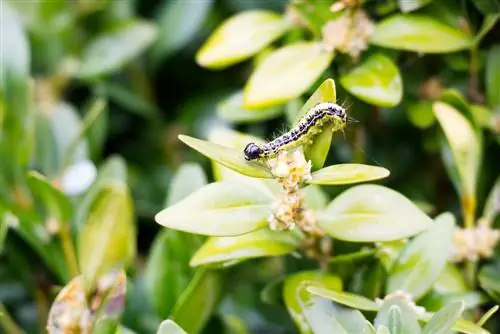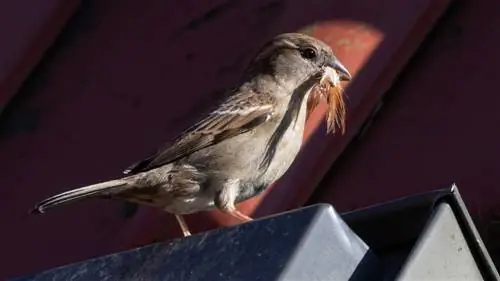- Author admin [email protected].
- Public 2023-12-16 16:46.
- Last modified 2025-01-23 11:19.
The sparrow, also known as the house sparrow or house sparrow, feeds mainly on seeds. He also eats animal food for part of the year. But does he actually like the caterpillars of the boxwood moth? An infected boxwood would at least be a richly laid table.
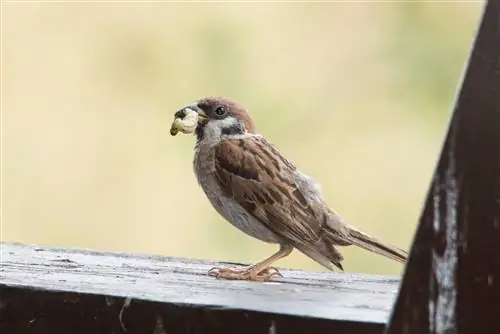
Do sparrows eat boxwood moths?
The boxwood borer is a pest that migrated from Asia. The local sparrow has long spurned the unknown caterpillars. That seems to be changing. They are increasingly being seen eating boxwood moth caterpillarsand evenfeeding them to their offspring
When do sparrows eat boxwood moths?
From spring to autumn Sparrows supplement their plant diet with various types of insects, which have recently also included the box tree borer, which is a neozoa. Sparrows even raise their offspring, which also hatch from the eggs, exclusively with caterpillars. It was long suspected that boxwood moth caterpillars were poisonous to birds, but this obviously turned out to be incorrect. Since they are thick and up to 5 cm long, they can even be described as a real catch.
Do other bird species also eat the boxwood moth?
Sparrows are particularly good at eating boxwood moth caterpillars. They literally invade boxwood hedges to get to the caterpillars. But these bird species are now also among their natural enemies:
- Chaffinches
- Great Tits
- Redtails
These natural enemies from the local bird world are reinforced in their hunt for the borer by several species of wasps.
Are sparrows enough to prevent an infestation?
A sparrow alone is not enough to combat it, nor is it enough to prevent an infestation. Butmany sparrowstogether are quite capable of keeping thepopulationof the boxwood borer sosmall that no further control measures are necessary. To ensure that sparrows settle in the garden, you should design it close to nature and offer plenty of nesting opportunities.
Tip
Support sparrows in combating them with biological means
If there are too few sparrows in the garden to destroy all the caterpillars in a timely manner, you should take additional action so that the boxwood does not suffer major damage. For example, you can remove moth caterpillars from the branches with a high-pressure cleaner or spray the bacterium Bacillus thuringiensis, which does not harm the sparrows themselves.

